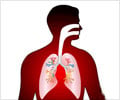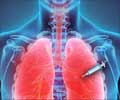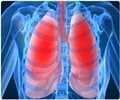Classically, chronic obstructive pulmonary disease (COPD) is defined by emphysema and/or chronic bronchitis, which destroys the normal architecture of the lung
Classically, chronic obstructive pulmonary disease (COPD) is defined by emphysema and/or chronic bronchitis, which destroys the normal architecture of the lung and inhibits the mechanical aspects of breathing.
Patients suffer from coughing fits, wheezing, and increased incidence of lung infections.These symptoms are associated with changes in the architecture of the lung. The air sacs, which usually inflate with air during breathing as they loose their elasticity, becoming rigid and unable to inflate. The lung becomes inflamed and increases its mucus production, which further inhibits gas exchange, and prevents the patient's ability to be physically active.Although COPD is a leading cause of morbidity and mortality worldwide, there is currently no cure for the disease. Providing patients with concentrated oxygen therapy and instruction on breathing techniques increases survival rates.
In a new study published in Disease Models & Mechanisms (DMM), http://dmm.biologists.org, collaborative findings by European researchers demonstrate that an antioxidant protein, sestrin, triggers molecular pathways that induce some of the critical lung changes associated with COPD. By genetically inactivating this protein, they were able to improve the elastic features of the lung in a mouse model of emphysema. These authors believe that by inhibiting the antioxidant sestrin protein, they prevent the accelerated degradation of elastic fibers within the lung. This suggests that patients with COPD could benefit from treatment with drugs that block sestrin function.
Although sestrin is an antioxidant protein, the authors found that this characteristic of the protein is not likely to influence its effects on COPD progression in the lung. The negative effects of sestrin on lung elasticity results from its suppression of genes whose products maintain elastin. Elastin makes the lung flexible so that it can expand and contract. Without elastin fibers, the lung becomes rigid and increasingly unable to provide for gas exchange.
Source-Eurekalert
RAS











